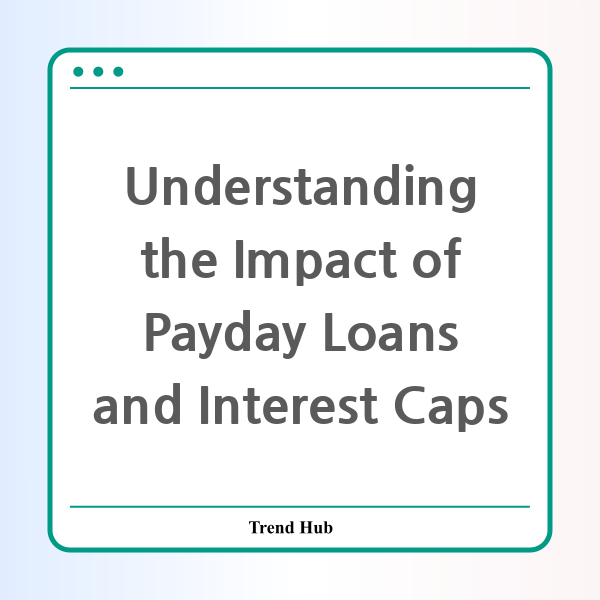* This website participates in the Amazon Affiliate Program and earns from qualifying purchases.

Are credit card interest rates spiraling out of control? With the median APR hovering around 25%, many consumers are left to grapple with the exorbitant costs associated with their credit. However, recent legislative proposals may shift the landscape of borrowing in the United States, particularly concerning payday loans and credit card rates.
Senators Bernie Sanders and Josh Hawley have introduced a bipartisan bill that proposes capping credit card interest rates at a mere 10% APR for a five-year period. The rationale is straightforward: to provide relief to working families who find themselves weighed down by high-interest debt. Nevertheless, while borrowers may cheer this potential relief, analysts and experts caution there are complexities that could make this legislation more harmful than helpful.
Why Interest Rate Caps Are Controversial
While the notion of capping credit card interest rates may appear appealing on the surface, the structure of such limits is critical. Experts emphasize that the details of how these caps are applied could ultimately dictate whether they are advantageous to consumers. Chi Chi Wu from the National Consumer Law Center pointed out that even zero-interest rates could lead to high costs through fees and repayment structures.
Moreover, large banking institutions are vehemently opposed to this cap, arguing that it would severely limit consumers' access to credit. They contend that the cap might push borrowers toward higher-priced and less-regulated products like payday loans. This comes as a significant concern because payday loans typically carry high fees and interest rates, leading borrowers into vicious cycles of debt.
The Many Facets of Credit Card Debt
Currently, credit card companies raked in over $105 billion in interest and more than $25 billion in fees from consumers in 2022 alone. So, one might wonder: would capping interest rates at 10% actually alleviate some of this burden?
Here’s a snapshot of some pertinent statistics:
| Year | Credit Card APR | Total Interest Charged | Total Fees Charged |
|---|---|---|---|
| 2022 | ~25% | $105 billion | $25 billion |
| 2025 (Projected) | ~24.26% | To be determined | To be determined |
According to surveys, around 77% of Americans support capping credit card interest rates. However, this support has notably dropped from 80% in 2022 and 84% in 2019, suggesting a growing skepticism among consumers about the effectiveness of such legislative measures.
Access to Credit: The Bigger Picture
The banking industry's argument centers on the fundamental principle of risk and return. By capping interest rates, lenders may become less inclined to extend credit to higher-risk borrowers. This could inadvertently lead to a reduction in credit availability for those who need it most, ultimately pushing more individuals toward alternatives like payday loans.
Existing federal laws already impose caps on certain loans, like the Military Lending Act which limits interest rates for active duty service members to 36%. Other federal credit unions might offer loans at a maximum of 15% APR, but there is still flexibility to increase rates under specific circumstances.
What It Means for Existing Borrowers
For current credit card debt holders awaiting a financial lifeline, the proposed cap may not provide immediate relief. Analysts suggest that this proposal would likely only apply to new purchases, leaving those with existing debt to navigate their high-interest obligations without any legislative support.
In conclusion, while the proposal to cap credit card interest rates at 10% holds promise for some, it is simultaneously fraught with challenges and drawbacks. Understanding the intricate balance of credit availability, consumer protection, and the implications of payday loans is essential for any informed discussion on this topic.
As we progress through this legislative journey, it is vital to keep a close eye on how these changes might affect your personal finances and the broader economic landscape.
* This website participates in the Amazon Affiliate Program and earns from qualifying purchases.